Greetings, fellow golfers! Welcome to the ultimate Golf Terms Bible – your go-to guide to understanding the mind-boggling language of the golfing universe. Whether you're new to the game or a scratch golfer, this comprehensive guide will keep you in the know and entertained as we break down the fascinating comical world of golf lingo. So, buckle up, and let's jump right in!
The Lay of The Land: Golf Course Terms
To understand the geography of the golf course, you need to know the lingo golfers use. From fairways and bent grass greens to pot bunkers and hazards, we've got the terms to help you get around the course without missing a shot. No budget GPS required! With these essential terms in your back pocket, you'll be able to confidently discuss the lay of the land and avoid those embarrassing moments when you're unsure of what a "green apron" is.
Back Nine - The final stretch (9 Holes) of an 18-hole golf adventure, where legends are made and dreams crushed.
Bent Grass - Bentgrass is a common turf grass found on golf courses, especially the putting green. Its texture is fine and dense making for firm fairways and fast greens.
Bermuda - This is a very popular turf grass in the South. It's thick and durable, loves heat and humidity, and doesn't need a lot of water.
Bunker (Sand Trap) - A sandy pit of despair (or opportunity) designed to challenge your golfing prowess. This hole filled with sand is considered a hazard and comes in many shapes and sizes. They can be found all over the course - fairway bunkers, cross bunkers fairways, and greenside bunkers. Just remember when you're in the bunker and you take a practice swing you can not touch the sand with the club.
Collar of the Green: The ring of slightly taller grass encircling the golf green, serving as a fashionable buffer between the putting surface and the rough.
Cup (Hole) - The plastic or metal cylinder lining the hole, or simply put the hole you need to get your golf ball into.
Desert Course - A golf course built in a desert environment where cacti, rocks and native plants may be your only gallery.
Dogleg - Merriam-Webster says it best, it's "a golf hole having an angled fairway." "...bent like a dog's hind leg."
Fairway - The well-manicured "runway" which leads you from the tee box to the green, where golf balls love to land (hopefully). This should be the shortest grass on the course aside from the green and can be anywhere from 25 to 50 yards wide.
First Cut - The slightly more forgiving buffer zone between the fairway and the rough - this grass sitting next to the fairway is taller than the fairway but not nearly as penal as the rough. Think of it as the rough's less aggressive cousin.
Fescue - This is the long wispy grass that is common in Links golf courses and the Open Championship. It loves cool weather and of course the British Isles.
Front Nine - The front nine is the first half of an 18-hole golf course; it's where the magic begins!
Grain - The direction in which grass blades grow on the green, often influencing your putting strategy. Putting into the grain results in slow putts while putting down grain can get very quick.
Green - The smooth, finely manicured area surrounding the hole, where putting and scoring is the name of the game. They come in all different shapes and sizes, even different types of grass depending on their location.
Green Apron - The transitional zone between the fairway and the green, like a welcome mat inviting you to the putting party.
Hazard - Any obstacle (water, bunker, or otherwise) designed to test your skills and often make you question your golfing abilities. They can be man-made like bunkers or natural like lakes or streams. Water hazards are marked with red or yellow stakes. If you can not hit a shot out of the hazard you must take a one-stroke penalty.
The word hazard is no longer used. Under the current rules of golf, the word is now penalty areas.
Heathland Course - A picturesque course common in Britain featuring heather, gorse, and other native vegetation, providing a true taste of the great outdoors.
Hole (Cup) - The ultimate destination for your golf ball – a small, circular depression in the green, waiting to be filled by a victorious putt.
Links - The term links golf refers to a type of golf course design that originated in Scotland and has a close association with the game's earliest roots. These courses are typically situated in coastal areas with sandy soil featuring natural rolling terrain, pot bunkers, sand dunes, fescue grass and few trees. The terrain is shaped by the natural elements and rugged coastline.
Out of Bounds - The "no-go zone" beyond the course boundaries, where golf balls are not welcome and you are not allowed to play a shot.
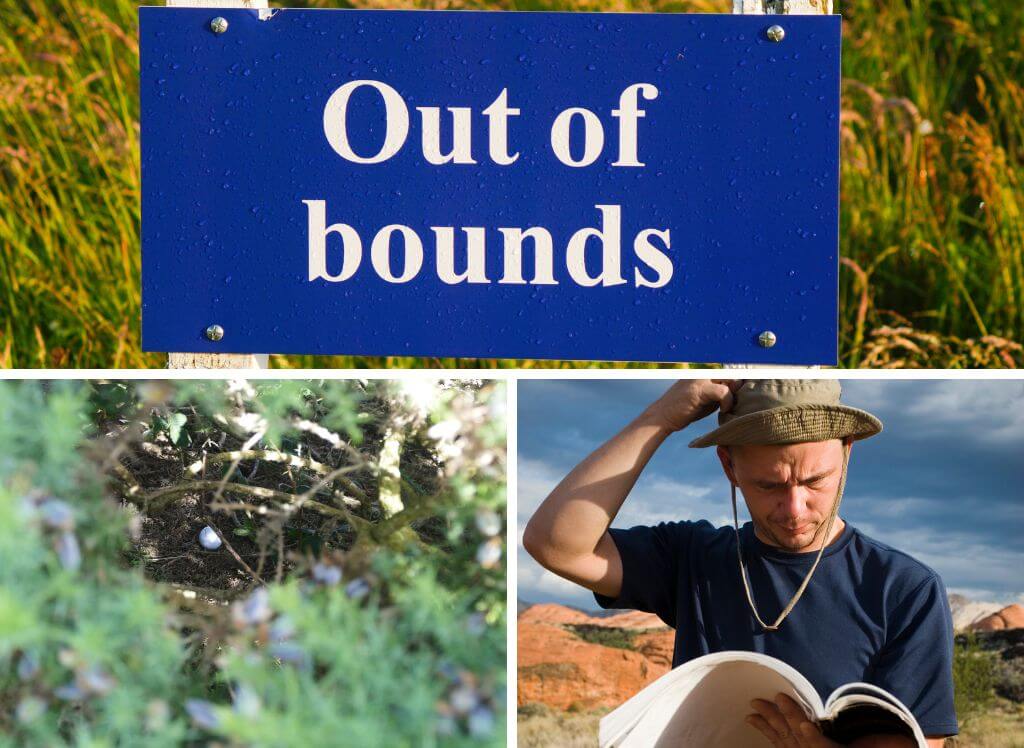
Parkland Course - A lush, tree-filled golfing oasis, reminiscent of a well-manicured park. These are the most popular types of golf courses in the US.
Pin (Flag, Flagstick) - The flagstick marks the location of the hole on the green; it's the ultimate target in every golfer's quest for green glory.
Rough - The not-so-friendly grassy area surrounding the fairway, where golf balls often go into hiding. Depending on the course and how long they let it grow it can be very difficult to hit out of.
Stadium Course - A course designed with spectators in mind, offering amphitheater-style seating and excellent views of the action.
Tee Box - (Tees, Teeing Ground, Teeing It Up, The Tee Shot)- This is where all golfers start the hole and play their first golf shot. Typically this area is flat and closely mowed unless you're playing a cheaper executive course or muni where the tee boxes can be a bit unkempt. Most courses have different color-coded sets of tee markers, which allow tee shots to be played from a variety of different distances, often to suit players of different abilities
The standard colored tee markers are Blue (farthest from the hole) for better golfers, White for the average golfer, and Red (closest to the hole) for Lady golfers. In addition, it's not uncommon to find 2 more sets of markers - Black (further than the Blues) and Gold (could be for Seniors or a special golf tournament).
Yardage Marker - Yardage markers are the poormans GPS. You can find them on most golf courses at distances of 200 yards, 150 yards, and 100 yards. They measure the distance to the center of the green and sometimes to the front and back of the green depending on the course. They can be color-coded. They can look like disks in the fairway bordering the hole.
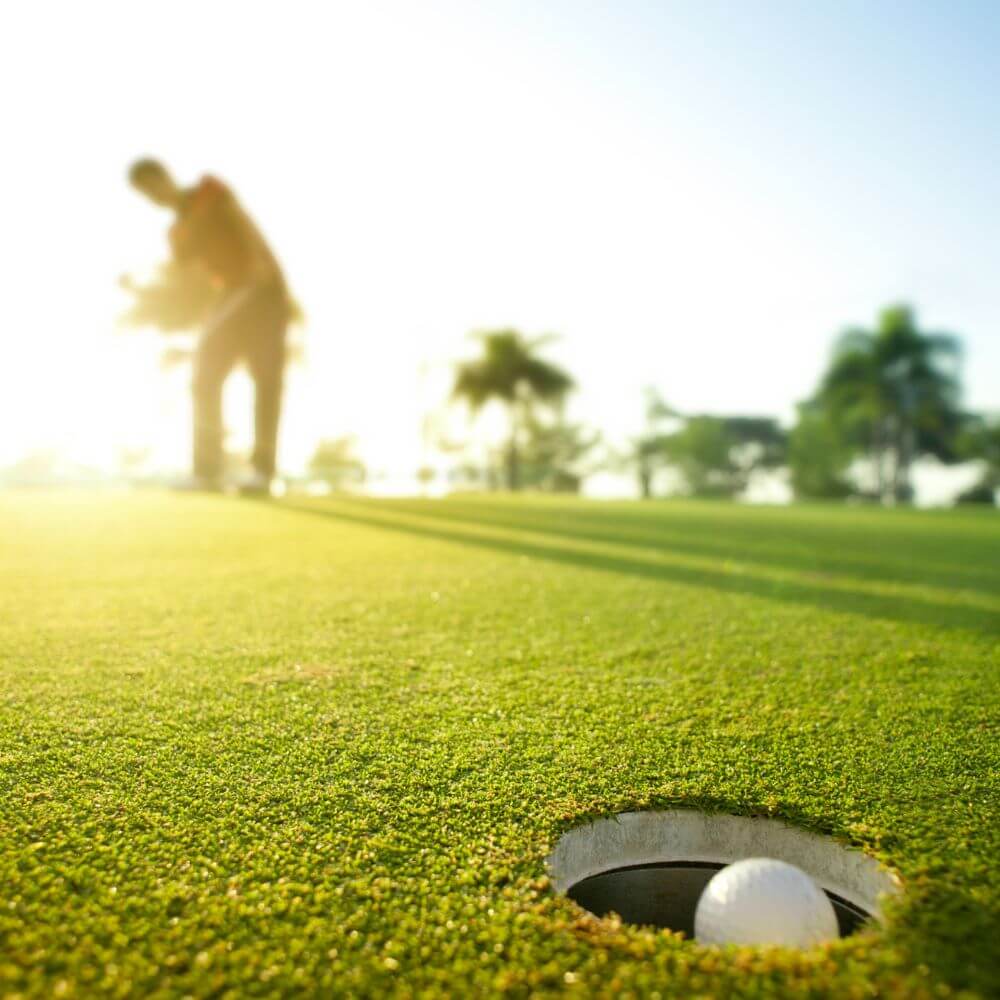
Count 'Em Up: Golf Scoring Terms
No need to be a math whiz, but knowing your golf terms for scoring is crucial! With words like birdie, eagle, and albatross, you might think you've wandered into an ornithologist's convention, but fear not – these terms are just a fun way of keeping score on the course. Grabbing these rare birds will do wonders for your scorecard the next time you play golf.
Ace (Hole-In-One) - A golfer's dream come true – a hole-in-one achieved with a single stroke! Time for a round of drinks on you.
Albatross (Double Eagle) - A truly rare bird and the holy grail of scoring. The odds - 6 Million times harder than recording an ace. This term signifies a score of three strokes under par on a single hole.
Birdie - Spread your wings and celebrate – you are one stroke under par on the hole!
Bogey - Not bad for the average golfer. This term means you've scored one stroke over par on a hole. Keep practicing - Pars and Birdies are coming.

Condor - The rarest bird of them all - 4 strokes under par on one hole (acing a Par 5). Is it even possible to score a condor? If you're one of 6 golfers in history it is.
Double Bogey - When one bogey just isn't enough – you've scored two strokes over par on a hole.
Eagle - Spread your wings even wider – you've managed to score an impressive Eagle. An Eagle is two under par on a hole!
Even - Keeping things balanced, the term Even or E indicates your score for a hole or for the round is equal to the par of the hole or the par of the course. Nice playing!
Over Par - Not quite reaching par, your score is higher than the established par for the hole or the course.
Par - This is every golfer's benchmark – you've achieved the expected number of strokes for a particular hole or for the golf course.
Quadruple Bogey - Ouch - you've found trouble! You've scored four strokes over par on a hole. Time to hit the range and break out your golf alignment sticks.
Snowman - The dreaded score of 8 on any hole.
Stroke - This is the basis of golf scoring, a stroke is recorded anytime you hit the ball (plus any penalties) or miss the ball attempting to hit it.
Triple Bogey - When the game goes a little awry – you've scored three strokes over par on a hole.
Under Par - This means serious bragging rights! Your score is lower than the established par for the course, showcasing your golf brilliance.
Swingin' Lingo: Golf Shot Terms
Every golfer has their own bag of tricks, and knowing your golf shot terms is essential for talking the talk and walking the walk. It's hard to improve your game if you don't understand the terms defining your shots. This section will leave you feeling like a true golf aficionado, ready to conquer the course with a vocabulary as impressive as your swing.
Bump and Run - A low-flying chip shot that lands and rolls out toward the hole (hopefully) – it's best performed with a low-lofted golf club.
Chip - This is a short shot designed to get the ball on the green and close to the hole. It is more about a lower trajectory and rolling out on the green like a putt.
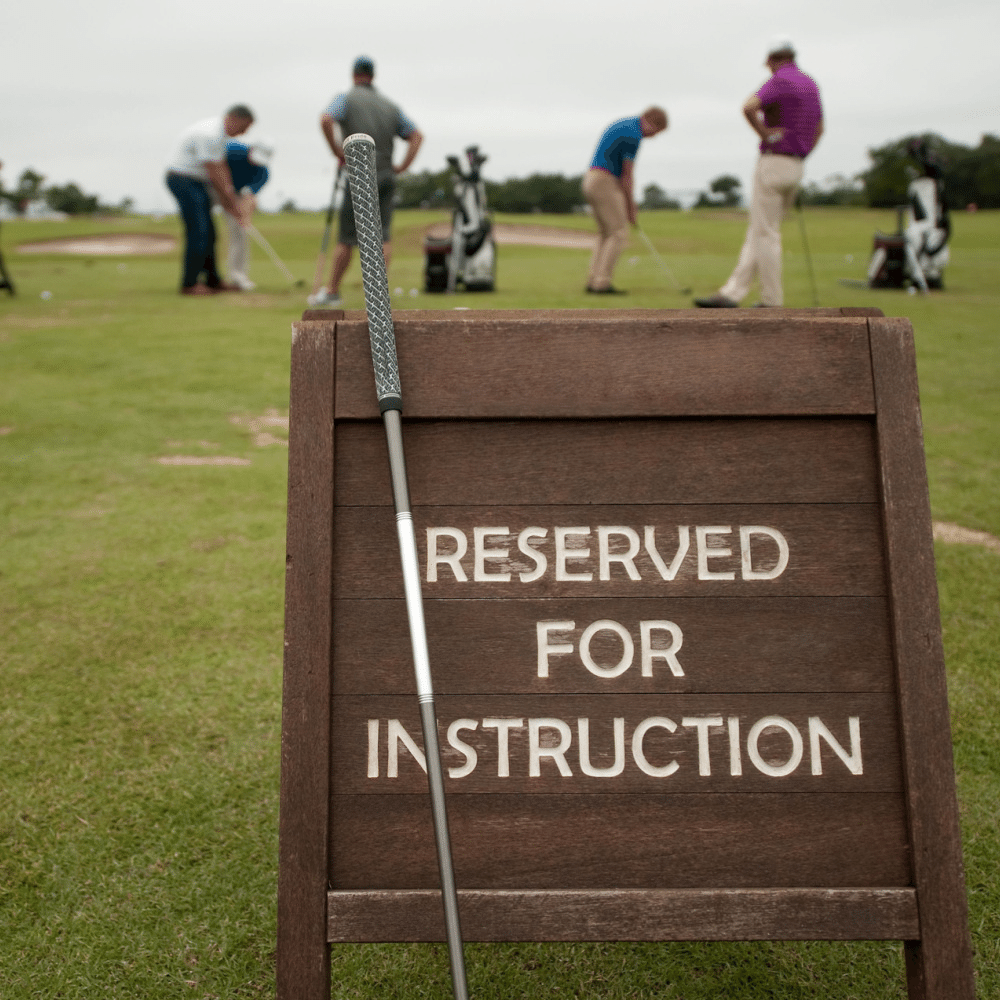
Flop (Lob Shot) - A flop shot is a high-lofted shot that lands softly on the green – perfect for impressing your golf buddies and avoiding trouble like greenside sand traps and hazards. However, this is not for the faint of heart. It can have a high degree of difficulty unless you're playing on the PGA tour. But if you can master this shot it will do wonders for your short game.
Flush - The sweet sound and feel of success. When you strike the ball with the sweet spot of the clubface, resulting in the purest of golf shots – it's like hitting the golf jackpot!
Lag Putt - A strategic, long-range putt aimed at getting the ball closer to the hole, hopefully setting up a short putt or a tap-in.
Pitch - A pitch shot is a high-lofted shot that travels a moderate distance and lands softly on the green. This is an ideal from 50 yards and in.
Punch/Knock Down Shot - The punch shot is usually a recovery shot to get you out of trouble or advance the ball under tree branches. A short backswing and a more controlled, abbreviated follow-through produce a low-trajectory shot that is great for cheating the wind. It's almost like a half-shot hit with force.
Putt (Putting Stroke) - A pendulum-like stroke used on the green to roll the ball into the hole with your putter. It's all about speed and accuracy.
Splash - A shot played from a bunker that sends both sand and the ball flying. This is a result of hitting behind the ball and using the sand to get it out. These bunker shots are like a day at the beach!
Stinger - A low, penetrating shot that stays close to the ground – just like Tiger Woods popularized.
Tap-In - More golf slang for a very short putt (inches from the hole) that can't be missed.
Up, Up, and Away: Ball Flight Terms
The way your golf ball takes flight can reveal a lot about your swing and your game. Unravel the mysteries of ball flight terms like "hook," "slice," and "stinger" to better understand your game and make the necessary adjustments to your swing.
Cut - A shot that's intentionally played with a gentle fade, curving slightly from left to right (for right-handed golfers). If you can master the cut shot you're on your way to more pars or birdies.
Draw - A shot that curves gently from right to left (for a right-handed player). It's a bomber's delight, a long high draw off the tee!
Fade - The opposite of a draw shot, this shot curves gracefully from left to right (for right-handed golfers). It could be golf's most stylish shot.
Flyer - The flyer is a shot that travels farther than intended, often due to reduced spin from the rough. This is due to the moisture and grass that gets in the way of the clubface and ball.
Hook - A shot that curves violently from right to left (for the right-handed golfer). Time to reel it in!
Pull - A straight shot that veers left of the target (for right-handed golfers) – time to straighten things out!
Pull Hook - A double-whammy for double disaster, combining a pull and a hook for an unintended sharp curve to the left.
Push - A straight shot where the ball travels right of the target (for right-handed golfers) – a gentle nudge in the wrong direction.
Push Slice - A two-for-one but not so special. combining a push and a slice for an unintended curve to the right.
Slice - A shot that curves significantly from left to right (for right-handed players) due to excessive side spin.
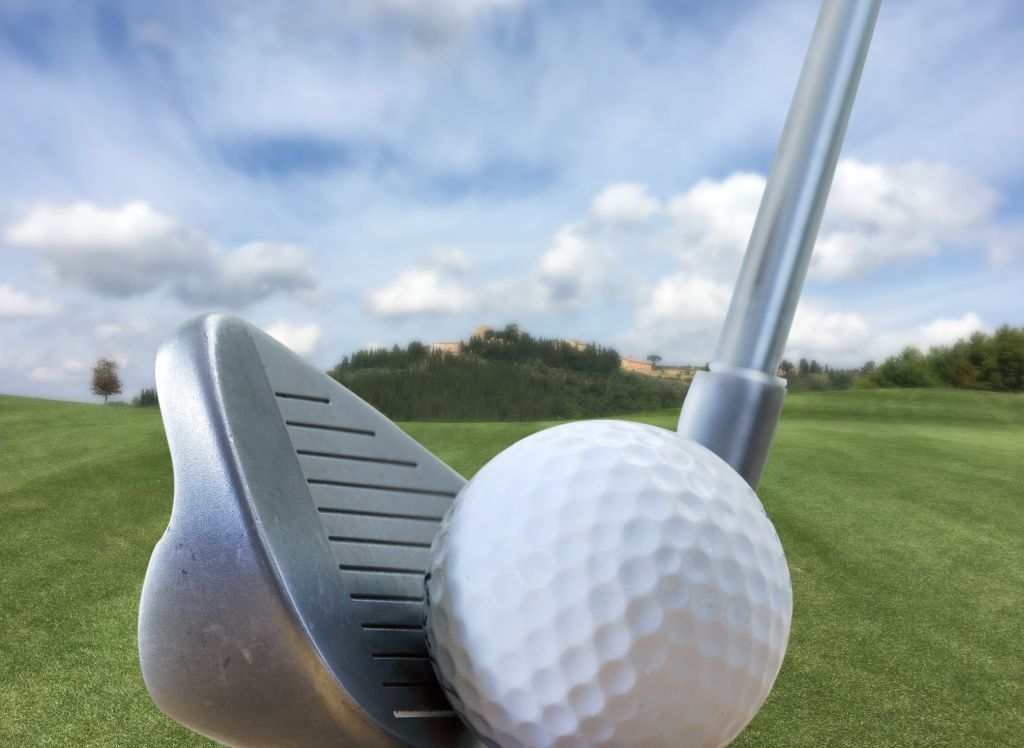
Yips - The curse that every golfer needs to avoid. The yips can come out of nowhere. You lose the ability to keep your hands steady making putting and chipping a disaster. Wrist spasms, tremors, and shaking can define this strange psychological and part-physical disorder.

Swing and a Miss: Terms for Golf Swing Flaws
Golf is an imperfect game. It's a game of misses. Your ability to control and understand your mishits is the key to becoming a low handicap golfer. In this section, we'll delve into some of the most common swing flaws and the colorful terms used to describe them. From "casting" and "chicken-winging" to "over-the-top" and "reverse pivot,"
Casting - Casting is a swing flaw that is the result of releasing the club too early on the downswing. This causes a steep swing, an open club face and. a serious loss of distance and accuracy.
Chicken Wing - Ah the dreaded chicken wing - a common swing flaw amongst amateurs. It's appropriately named since the elbow sticks out during the follow-through of the golf swing. This is a result of the arms contracting which leads to the elbows separating. The end result is a weak slice or poor miss to the right.
Duff - A shot hit unintentionally weak or a mishit shot that barely moves the ball forward. This is typically caused by poor contact between the clubface and the ball – time for the golf impact bag!

Fat/Chunk - When your swing connects with the ground before striking the ball, causing a less-than-ideal shot - shorter and sometimes off target. Watch out for that divot - time to trim the fat!
Over-The-Top - High Handicappers beware. This all too common swing fault comes from too much upper body on the downswing resulting in that dreaded outside-to-in swing path and yet another slice. The fix - get the lower body working for a better swing plane.
Shank - It's every golfer's worst nightmare but what exactly is a shank? An unfortunate shot where the ball connects with the club's hosel, causing it to shoot off at a severely wicked angle 9 to the right for a rightie).
Skied (Pop-Up) - This is an unintentional shot that is hit off the top face of the driver. The result is a super high shot with little distance, just vertical height.
Thin/Skulled/Bladed - Hitting a thin or bladed shot occurs when the club strikes the top of the ball with the leading edge, causing it to fly low, fast, and further than intended. It's time to check your setup and fundamentals!
Topped Shot - This is basically hitting it thin but instead of screaming along the ground, it dribbles a short distance along the ground.
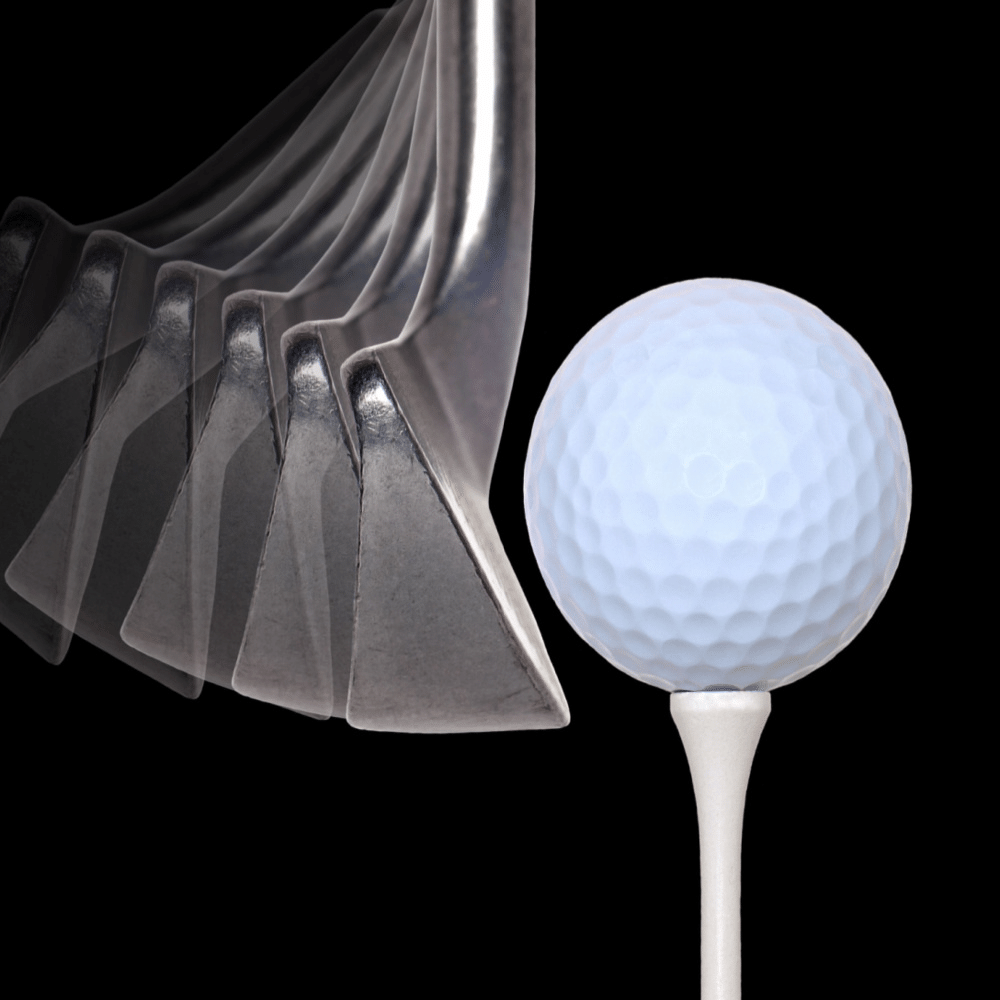
Lies, Lies, and More Lies: Terms for Golf Lies
No, we're not talking about cheating golfers; we're talking about the position of your golf ball on the course. Mastering golf lie terms, such as tight lie, plugged lie, and fried egg, will help you assess your ball's situation and make better decisions on how to hit your next approach shot.
Buried - When your golf ball is partially or fully buried in sand or the deep rough. You'll need a steep angle of attack to get out.
Downhill Lie - A lie where the slope of the ground descends toward the target, making for a tricky shot where the club is delofted. So expect a lower ball flight and more distance. With a lower front foot work on shifting your weight to your back foot.
Embedded - When your golf ball is lodged or stuck in the ground. In 2019 the United States Golf Association changed the embedded rule. As long as you're not in the bunker you can now drop the ball within one club length (no closer to the hole). Thanks, USGA!
Fluffy - A lie where the golf ball sits on top of the long grass, usually the rough. This creates a teed-up effect allowing for good contact. But don't get too comfy, you still need to hit it!
Fried Egg - No, it's not breakfast time. This is not a desirable lie. It occurs when your ball is partially buried in a bunker, resembling a sunny-side-up egg. It makes for a challenging shot.
Preferred/Winter Rules - A lie that can be improved by the golfer due to poor conditions, course maintenance, or wet weather. This is a local rule allowing the golfer to mark his ball, pick it up and clean it and place it no closer to the hole. It's like free drop and the best seat in the house!
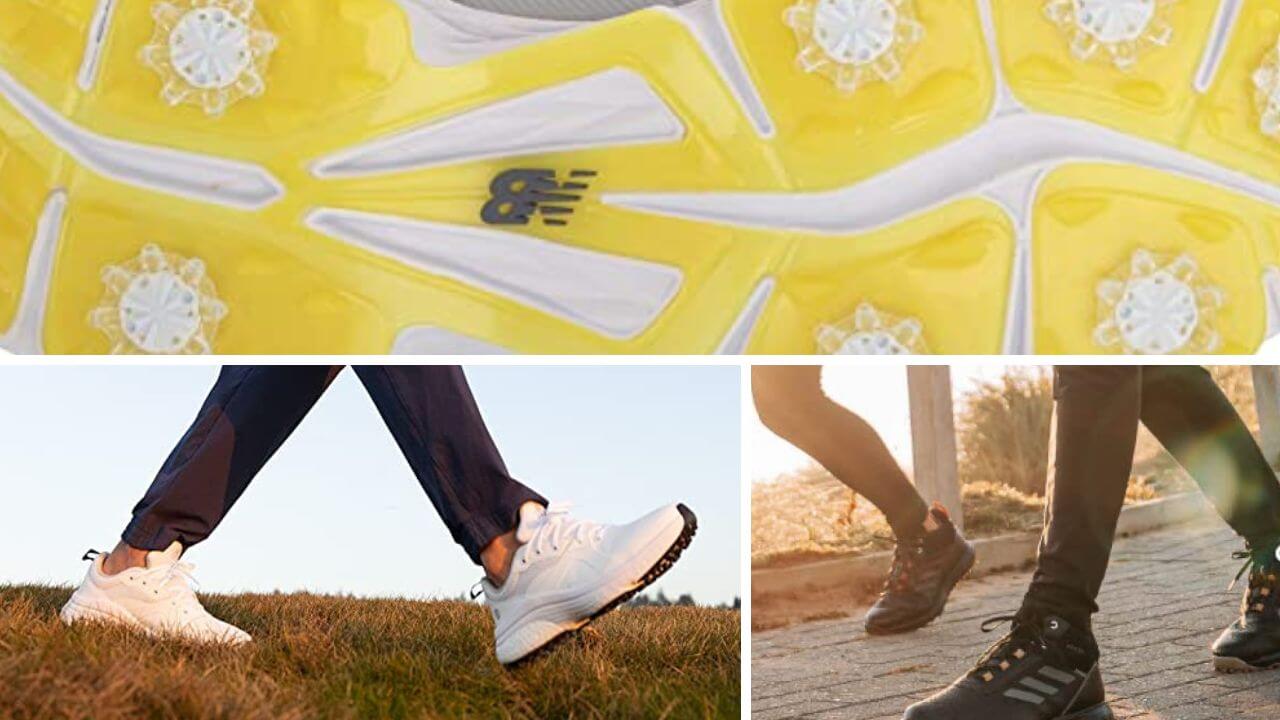
Plugged - When your ball is embedded in a sand bunker or soft ground – time to unplug and swing away! This is unfortunately common on older muni courses that don't drain well in wet weather.
Tight - A lie where the ball is nestled close to the short grass or firm hard ground, often dirt or hardpan. When you hit out of a tight lie it's all about making contact with the ball first or picking it clean.
Unplayable - A lie in which the ball's position makes it impossible to play a shot. This will result in a penalty stroke. Once you declare the ball unplayable drop within two club lengths (no closer to the hole) or back in line (any distance in line between the unplayable lie and where you hit your previous shot.
Uphill Lie - A lie where the slope of the ground ascends away from the target, adding an extra challenge to your shot. Expect a shorter higher shot due to the increased loft of the club head.
Clubs, Gadgets and Gear Galore: Golf Equipment and Accessory Terms
From drivers and rangefinders to ball markers and divot tools, the world of golf accessories is vast and varied. Get to know the lingo of these handy gadgets, and you'll always be prepared for whatever the game might bring.
Ball Marker - A small, flat object used to mark the position of a golf ball on the green. It allows you to mark your ball, pick it up and clean it. It helps identify your golf ball and line up your putts
Blades - This is old-school golf at its best. These are classic forged clubs that have been around forever. They're smaller and thinner in design with a sweet spot designed for only the best ball strikers. This is not a very forgiving golf club.
Cavity Back Irons/Game Improvement Irons - The opposite of blades. These clubs often feature a hollow cavity at the bottom of the club. They have a thicker profile with a giant sweet spot. If you're a beginner or high handicapper and are looking for maximum forgiveness, this is the golf club for you.
Chipper - A golf club designed specifically for chipping, featuring a loft angle similar to a 7 or 8 iron with the shaft length of a putter or wedge – your secret weapon for those delicate shots.
Divot Tool - A handy tool for repairing spike marks and pitch marks (small indentations) when your ball hits the green. Golf is a game of respect and etiquette and this simple device ensures a smooth putting surface for all – so be a golf superhero and repair your pitch mark. This will help save the greens for the groups behind you.

Driver - Commonly referred to as the "Big Dog", this should be the longest and largest club in your bag. It's designed for tee shots and to generate the most distance.
Fairway Woods - Clubs with larger heads and longer shafts than irons, designed for hitting the ball from the fairway or the tee box. These are designed to go further than any club in your bag other than your driver. Typically most golfers play with a 3 wood and a 5 wood and sometimes a 7 wood.
GPS - A device or app that provides yardage distances and other course information – your high-tech caddy for navigating the links!
Hybrid - A club that combines the best of a fairway wood and iron, offering more forgiveness and versatility – it's like having the best of both worlds in your golf bag!
Irons - For accuracy, golfers reach for their irons. These clubs are made of metal, boasting clubheads smaller than woods. They are numbered from 1-9 and come in a variety of styles and designs. The lower numbers have lower lofts and are designed to hit the golf ball further. As the numbers increase so does the loft making it more conducive to a higher ball flight. Irons are used on the tee box and for approach shots to the green from the fairway or rough.
Launch Monitor - A device that analyzes your swing and provides data on ball speed, spin, launch angle, and more – it's like a personal golf coach at your fingertips!

Putter - A club you use on every hole unless you hole out before you reach the very short grass. They are specifically designed for putting, featuring a flat face for rolling the ball on the green and hopefully right into the cup.
Rescue Club - Another name for a hybrid club, offering more forgiveness and versatility – here to save the day and your golf game!
Rangefinder - A device that measures the distance to the pin or other targets on the golf course – like a personal golf GPS, helping you find your way!

Spoon - This is golf slang for a 4 wood.
Tees - Small pegs usually made of plastic or wood that are used to elevate the first ball (initial stroke) on each hole – they're like tiny pedestals for your golf ball's moment of glory! They come in different styles, sizes, and colors.
Wedges - Wedges are all about short approach shots to the green and getting up and down around the green. They have the highest loft of any of your irons perfect for a high ball flight and a soft landing. There are basically four types of wedges: the pitching wedge (lowest wedge loft), the gap wedge, the sand wedge, and the lob wedge.
Woods - Clubs with large, round heads, designed for long-distance shots – they're like the heavy hitters in your golf lineup!
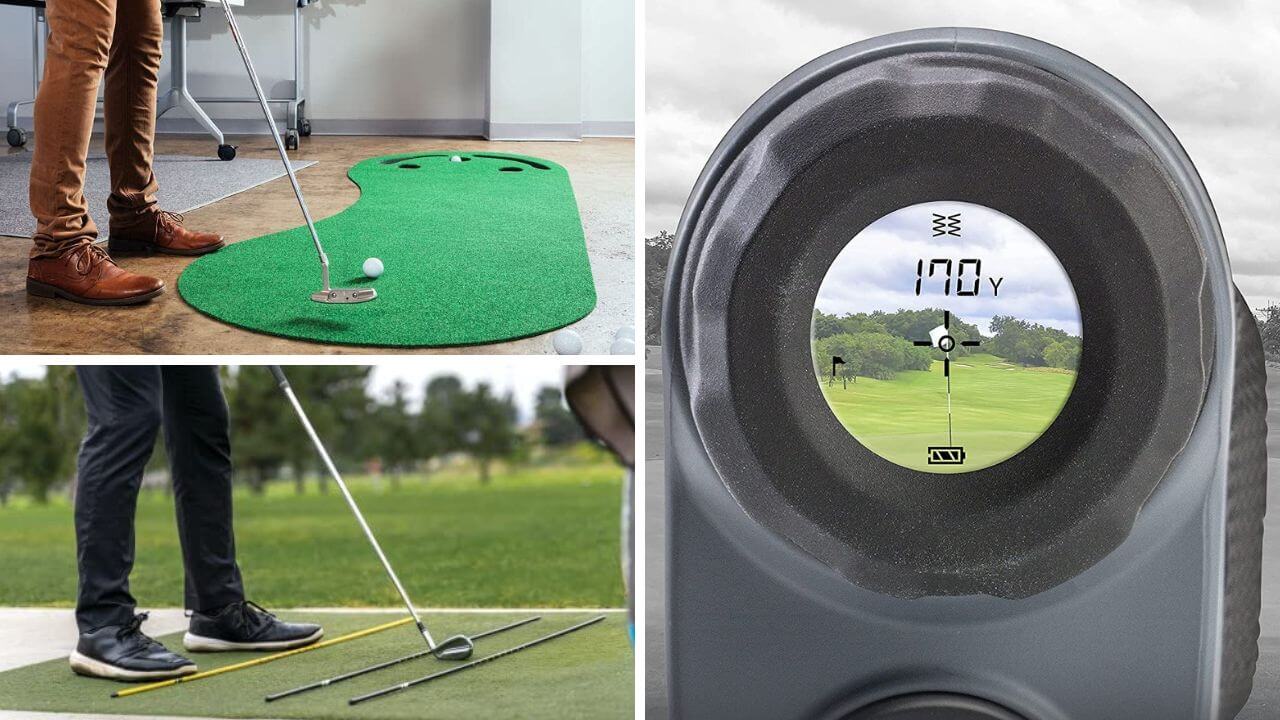
Tee-Time Tournaments: Golf Game Terms
The game of golf is full of exciting and challenging variations, from classic stroke play and match play to the more exotic "bramble" and "wolf." Get to know the ins and outs of different golf game terms, so you can spice up your round of golf with friends and keep the competition fresh and exciting.
Alternate Ball - A team golf format where players take turns hitting the same ball – it's like a golf relay, passing the baton with every shot!
Best Ball (Better Ball, Four-Ball) - This is a team game where teams of two or four play against each other. Each player plays their own golf ball. The team's score is the lowest score of any of the team members. The team with the lowest net score wins.
Bingo Bango Bongo - A points-based game that rewards golfers for being the first to reach the green, being closest to the pin, and being the first to hole out – it's like the golf trifecta!
Bramble (Shamble) - A bramble or shamble is a team game where players tee off, choose the best shot, and then play their own ball from there – it's the perfect mix of teamwork and individual skill. Think scramble meets best ball.
Captain's Choice - This is a scramble format where you're picking the best shot after every golfer hits or putts their ball. But there's one major difference. In a scramble, the team decides on the best shot to play. When you're playing Captain's Choice a Captain is chosen before the round starts. The Captain then makes all the decisions on which shot to play.
Concede - This could mean giving up a hole or a match or even a stroke. This is common in match-play events when you're out of the hole with no chance of winning. It is also a sign of sportsmanship when you concede a short putt to your opponent.
Dormie - This is a common term in Match Play that is used when a player or team is in a position where they can not lose the match. Their lead is the same as the number of holes left. For example, if they are 3 up with 3 to play the opponent is considered dormied.
Greenie - Simply put this is a green in regulation. It is often part of a side game or bet on a par 3 where the player closest to the hole in regulation wins a point, a dollar, a drink or however the group defines the stakes.
Match Play - A head-to-head format where players compete against each other to win individual holes. The player with the lowest score on a hole wins that particular hole. The goal is to win the most holes.
Nassau - A Nassau wager is a type of three-way bet among players, which includes three separate wagers. These three wagers represent the front 9, the back 9, and all 18 holes.
Order of Play - Order of play is all about etiquette. It defines which golfer tees off first and who plays their next shot. On the tee box, honors go to the golfer with the lowest score. In the course of play, the golfer farthest from the hole goes first.
Press - A press is all about golf betting and winning back money when you or the team is down in a match. A press is a second or new bet on top of the original bet. It is usually the same amount as the original bet.
Ready Golf - Ready golf is all about speeding up the pace of play. Forget about honors or etiquette. If you're ready, able and it's safe to do so play your shot. There's no need to wait for your partner behind you looking for his ball. This holds true on the tee box too. There's no need to have the winner of the previous hole go first if he or she is not ready. In 2019 the USGA gave "ready golf" their stamp of approval.

Scramble - This is one of the most popular team formats where all 4 players tee off, then select the best shot. From here all 4 players will play their second shot. This process continues until the ball is holed out. The beauty of this game is that you get to play your ball on every shot but you have the benefit of playing that shot from the location of the best previous shot from the group. The scramble is often the preferred format for charitable and casual fun tournaments.
Shotgun Start - In tournament golf, a shotgun start is when all foursomes begin play simultaneously but from different holes. This allows up to 72 players to start at the same time.
Skins - A game where players compete for a skin on each hole, which carries over if no one wins outright. A skin could be winning the hole or a greenie or getting up and down out of the bunker or whatever the group decides
Stableford - A scoring system that awards points based on the player's performance relative to par. The player or team that accumulates the most points wins.
Stroke Play/Medal Play - A scoring format where players compete against each other recording every stroke over 18 holes. The player with the fewest strokes over the entire round wins – it's like a race to the finish line, one stroke at a time! This is the most common format of golf.
Texas Scramble - A variation of the scramble, with each team member required to contribute a minimum number of drives – it's an all-hands-on-deck golf adventure!
3 Ball - A betting game where three players compete against each other, with the best score on each hole winning the pot – it's a showdown for bragging rights!
Wolf - A fun game where one player, the "wolf," chooses whether to play alone or team up with a partner for each hole – it's a game of strategy, alliances, and a howling good time!

Clubbing 101: Terms For Golf Club Parts
Welcome to Clubbing 101 where we'll break down the anatomy of your trusty golf clubs. From the essential grip to the almighty sweet spot, we're about to delve deep into the inner workings of these essential golf tools. So, let's tee off into the gripping world of golf club lingo!
Bounce - The bounce angle of a golf club is the angle between the sole of the club and the ground. It can vary from 0 to over 14 degrees and has a significant impact on how the club will perform on different types of turf and sand.
Clubface - The flat surface on the clubhead that makes contact with the golf ball. It's the business end of your golf club, ready to send the ball flying!
Clubhead - The heavy, bottom part of the club that includes the clubface – it's like the hammer that delivers the power in your golf swing!
Face Angle - Is your clubface open, closed, or square? The term face angle describes the direction the clubface is pointing relative to the target line during the moment of impact.
Ferrule - The small, decorative ring where the shaft meets the clubhead – it's like a stylish accessory that protects the shaft.
Grip - The top part of the club where your hands hold the golf club. The grip is usually rubber, leather, or some other material. It goes over the end of the shaft.
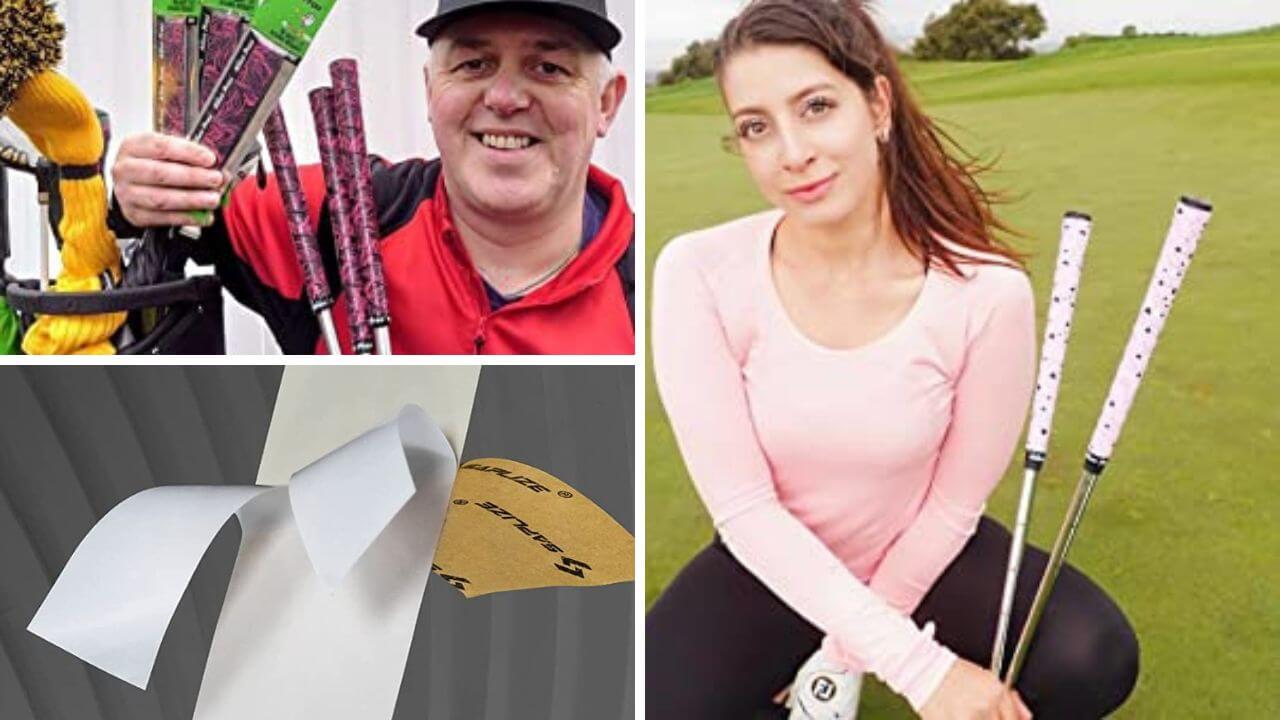
Grooves - The horizontal lines etched into the clubface, designed to increase spin and control – they're like the club's secret sauce for better shots! Be loving to them - they need to be cleaned.
Heel - The part of the clubface closest to the shaft.
Hosel - The small, cylindrical part of the club head where the shaft is attached. It's like the neck of your golf club.
Lie Angle -The lie angle is the angle formed between the centerline of the club shaft and the sole of the club when it is positioned on the ground.
Loft - Loft refers to the angle formed by the clubface and the ground measured in degrees. The higher the loft the easier it is to get the ball off the ground. The higher the iron number the greater the loft. The lower the loft the farther the ball will go and the lower the trajectory will be.
Shaft - The long, slender tube-like part of the golf club that connects the grip to the club head. The golf shaft comes in a variety of flexes and weights and is usually steel or graphite.
Sole - The bottom part of the club head that glides across the turf.
Sweet Spot - The optimal point on the clubface for maximum ball speed and distance – it's the golf equivalent of hitting a home run! It's the goal of every swing strike the ball in the middle of the clubface.
Toe - The part of the clubface furthest from the shaft.
Beyond the Fairway: Other Golf Terms
These are the terms every golfer should know but we just don't quite know where to put them.
Caddie - Your trusty sidekick on the golf course, offering advice, carrying your golf bag, cleaning your clubs, providing the correct distance, reading the greens and probably chuckling at your swing every now and then.
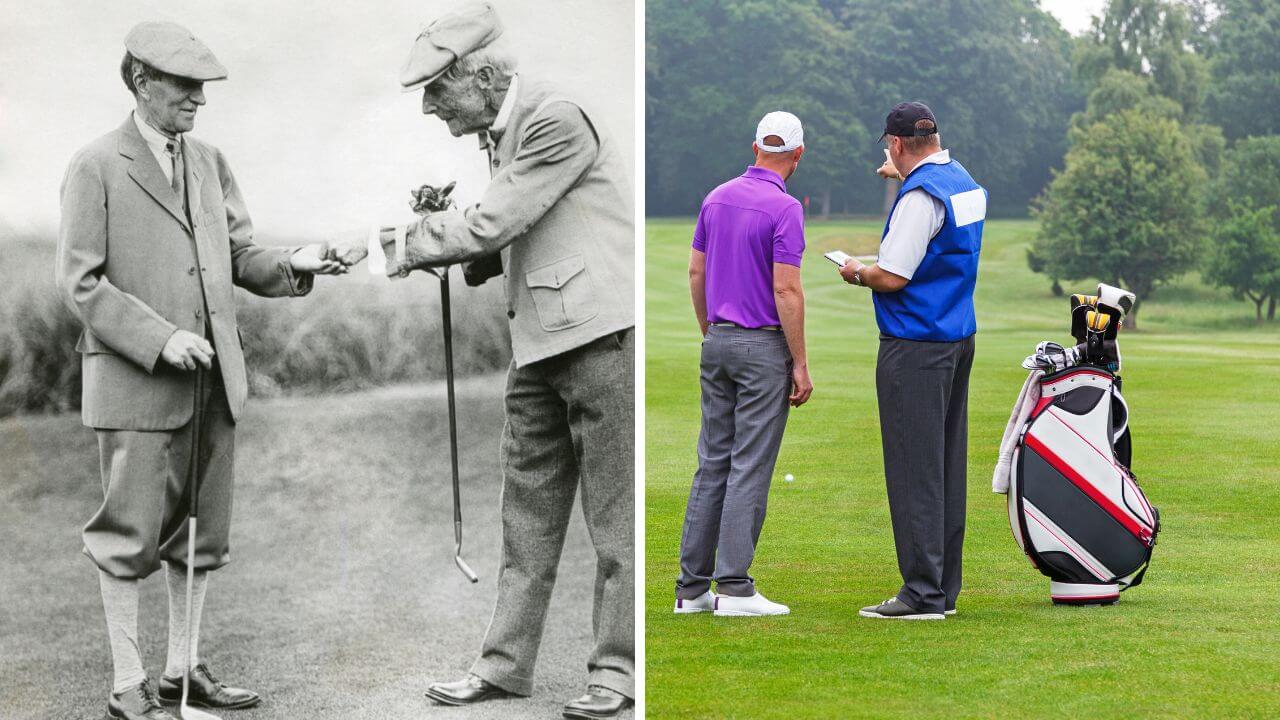
Carry Distance - The distance a golf ball travels in the air before hitting the ground – it's like measuring the ball's frequent flyer miles!
Clubhead Speed - The speed at which the clubhead is traveling at impact – it's like the golf swing's very own speedometer!
Fore - The universal golf warning cry – a polite way of saying, "heads up" or "duck and cover, the ball is flying your way!"
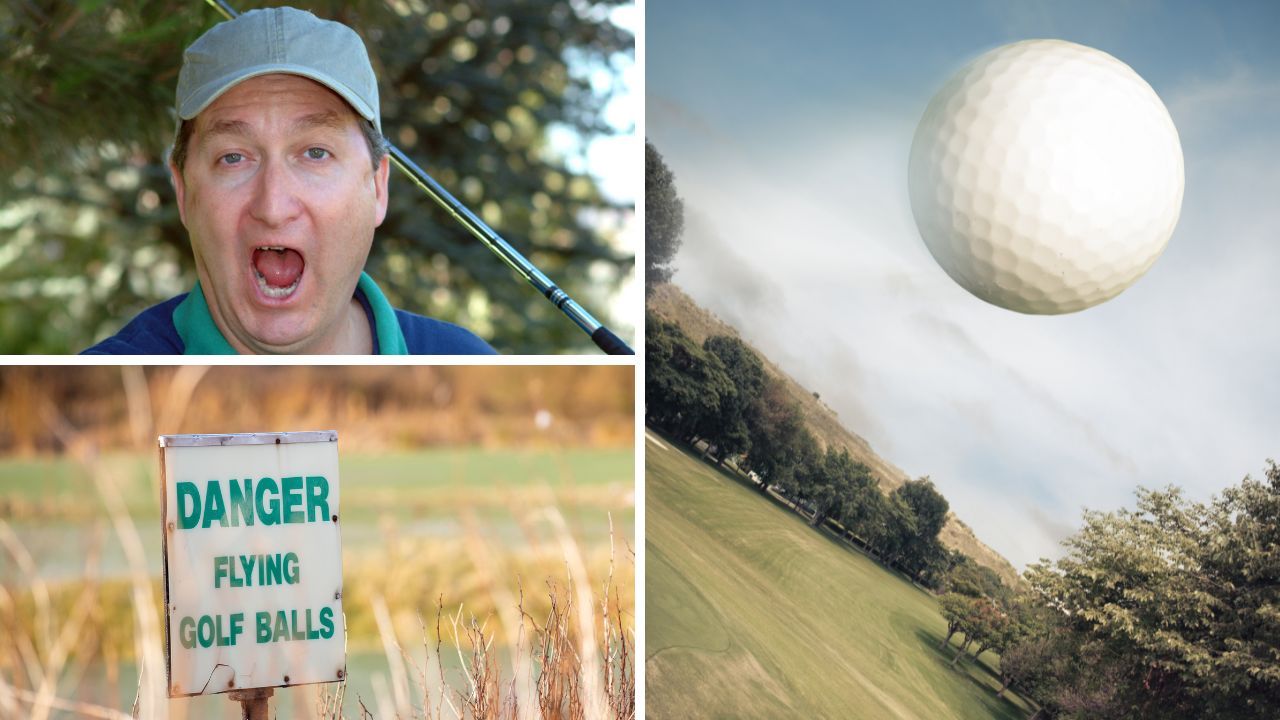
Grand Slam - This is the ultimate goal for the best professional golfers on the planet. All you need to do is win all 4 Majors in one calendar year - The Masters, The US Open, The Open Championship (The British Open), and the PGA Championship. Since 1930 this has only been accomplished by Bobby Jones.
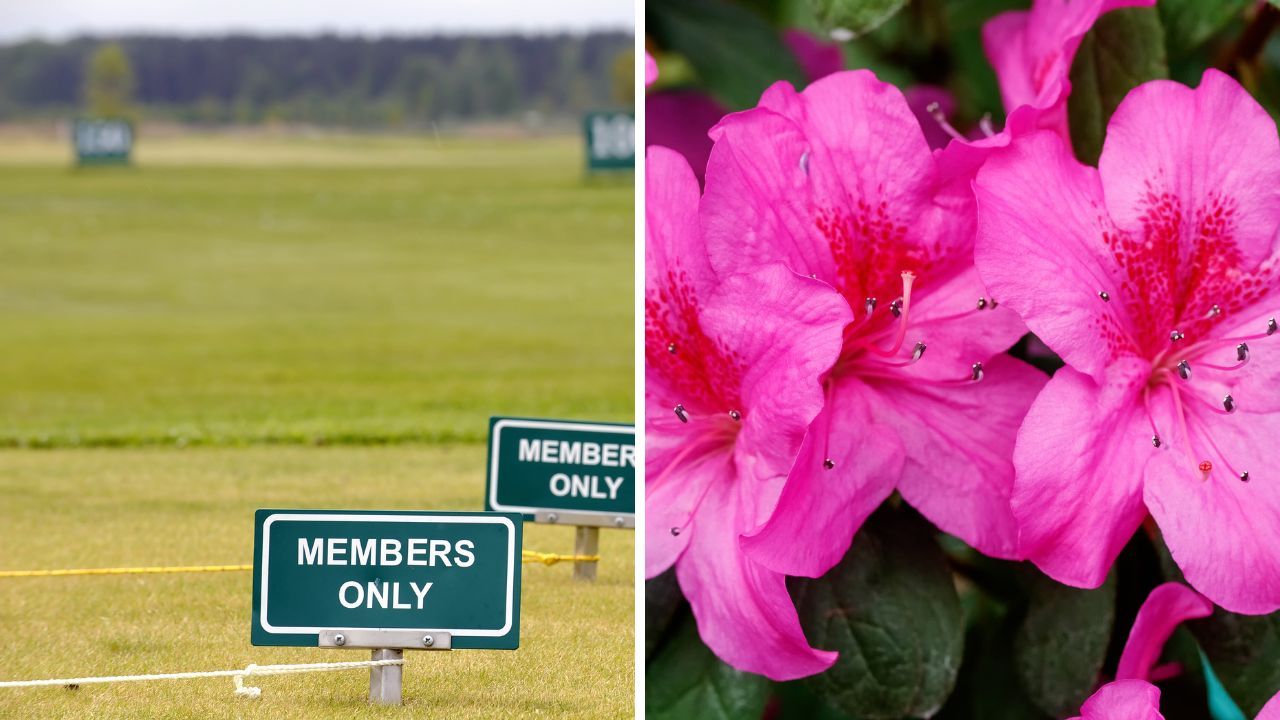
Handicap - A clever little number that levels the playing field between golfers of all abilities allowing the beginner or high handicapper to compete with a low handicapper or scratch golfer. The handicap number or index represents the strokes over par you are expected to shoot on a particular 18-hole course.
Hole Out - This is the ultimate goal on every hole that you play. Get the ball in the hole. Plain and simple a hole out is the final shot you hit or putt that results with the golf ball at the bottom of the cup.
Lip Out - When a putt teases you by circling the hole before cruelly rolling away.
Provisional Ball - In golf, a provisional ball is a second ball played from the same spot as your first shot. This is done when there's a possibility that your first shot may be a lost ball or out of bounds. It's like an insurance policy in case your first ball cannot be found or is not in play.
Rating - A measurement of the difficulty of a golf course for scratch golfers.
Scratch Golfer - What we all aspire to become. This is a golfer who can play to a zero handicap. These are the unicorns of the golfing world, elusive and majestic!
Slope - A course rating system that measures the difficulty of a golf course for bogey golfers – it's the golf world's way of telling you how difficult the challenge is.
Smash Factor - The ratio of ball speed to clubhead speed. This is the recipe for a powerful and efficient swing.
Up and Down - A golfer's Houdini act... Perhaps a chip and a putt... Up and down is all about getting the ball into the hole in just two strokes, typically from off the green - pure magic!
Golf Ball Banter: Golf Ball Terms
From dimples to compression, and everything in between, this entertaining section dives deep into the nuances of golf's most essential yet often overlooked character - the golf ball.
Balata - This is an old-school golf ball cover popular in the 70s and 80s although they've been around since the turn of the 20th century. This is a soft feel ball that was all about spin and control. The problem was the cost and durability of them.
Compression - The measure of how much a golf ball deforms when the golf club makes contact with the golf ball. It's like the ball's personal squishiness rating, helping you match your swing speed to the perfect compression rating. Golf balls have a rating from 30 (soft) to 120 (hard). The higher the rating the faster your swing speed should be.
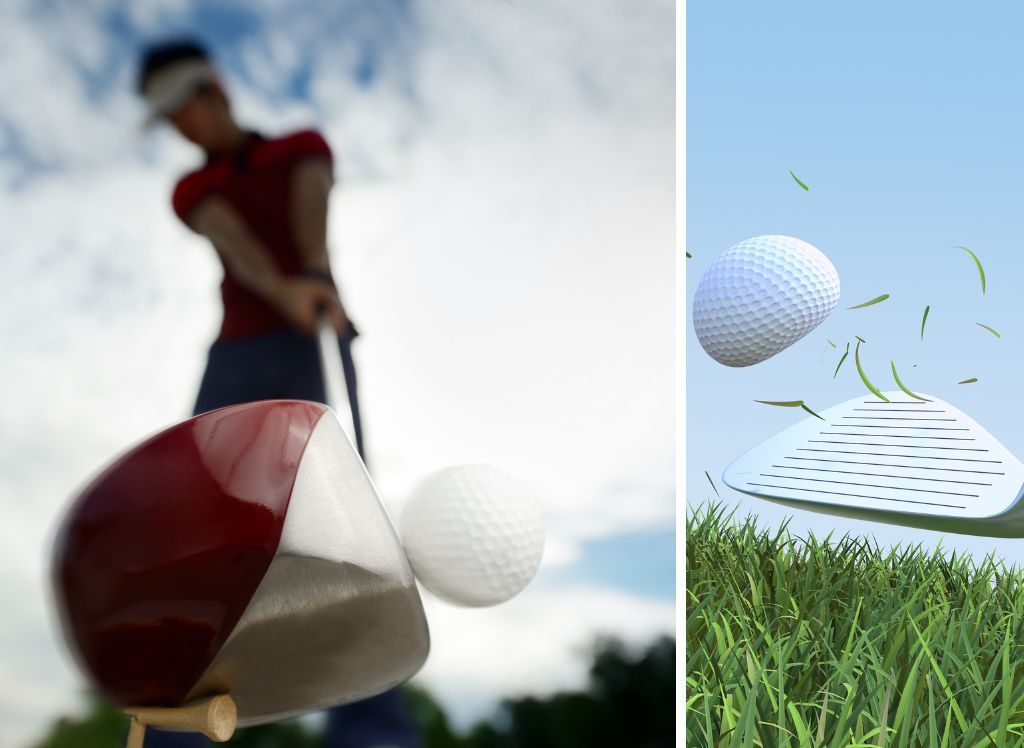
Core - The innermost part of the golf ball, responsible for transferring energy from the club to the ball – it's the ball's engine room, fueling those long bombs off the tee.
Cover - The outer layer of the golf ball that influences its feel, spin, and durability – it's like the ball's stylish outfit, tailored for performance!
Dimple - Those cute little indentations on the golf ball's surface that help it fly further and straighter. The size and shape affect the ball's aerodynamics.
Multi-layered - Golf balls with more than one layer or piece, designed for every type of golfer. They cater to different swing speeds and skill levels. Whether it's about control and spin or ball flight and distance there's a golf ball that matches your game.
Spin - The rotation of the golf ball during flight, affecting its trajectory and distance – it's the ball's very own dance move in the air!
Surlyn/Ionomer Cover - This harder golf ball cover is all about distance, durability, and value. It's the workhorse of golf ball covers, perfect for beginners and high handicappers.
Three-piece, Four-piece, Five-piece - Golf balls with a solid or liquid-filled center core, 1 to 3 layers of hi-tech rubber or resin, and a cover, offering a balance of distance, spin, and feel. It's like the perfect golf ball, a little bit of everything!

Two-piece - Golf balls made up of a solid core and a cover, offering durability and distance – they're the no-nonsense, hardworking heroes of the golf ball world! The best bet for beginners and high handicappers.

Urethane Cover -This is the cover of choice for premium golf balls where spin, control, and feel make up for the higher price tag. You'll find Professional golfers and low handicappers playing Urethane balls.
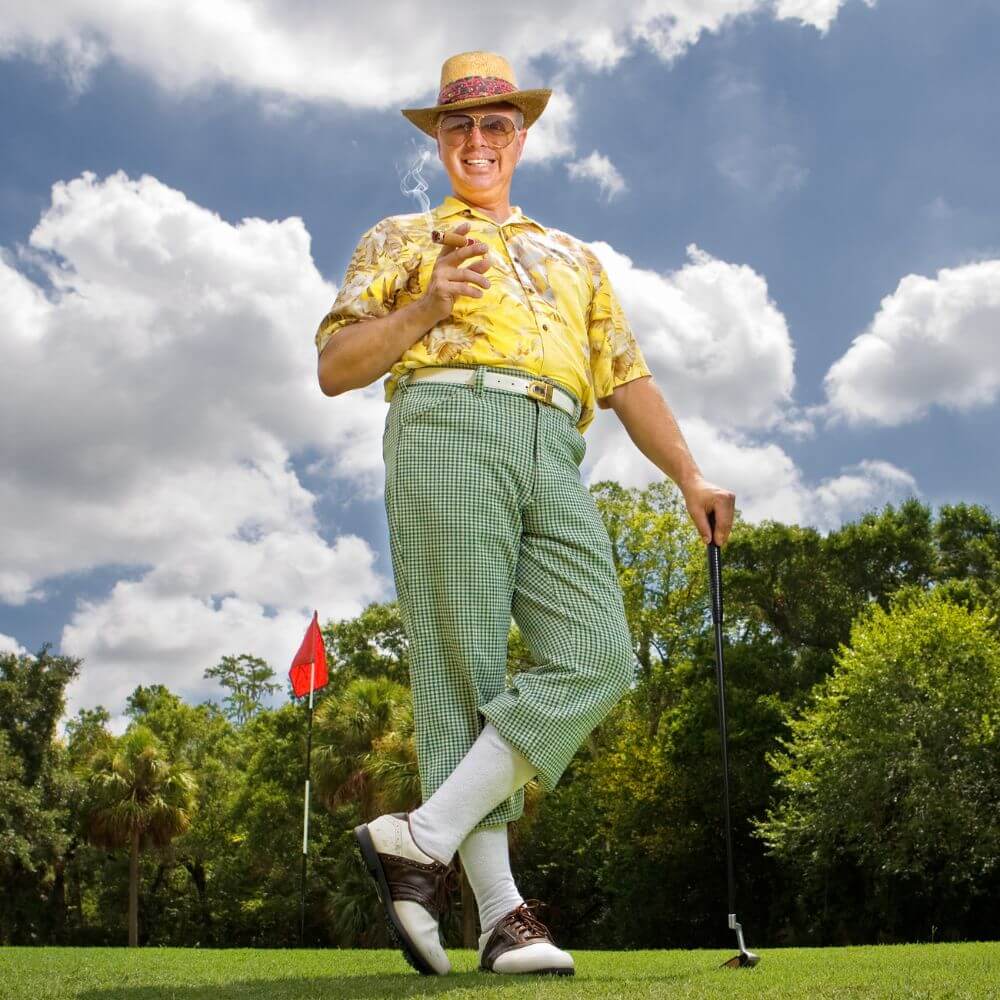
A Round of Laughter: Funny Golf Terms
Welcome to A Round of Laughter where we'll be having some fun with the more comical side of golfs vocabulary. Prepare for chuckles and laughs, as we delve into the delightful world of humorous golf lingo.
Banana-Ball - A super wicked slice.
Breakfast Ball - In golf, a breakfast ball is a mulligan or do-over of the first tee shot during a round. It's typically offered as a freebie since many golfers struggle with their initial shot, especially if they haven't warmed up yet.
Chili Dip - No we're not talking about grabbing lunch at the turn. This is a common fault amongst amateurs when they're chipping around the green. A chili dip occurs when you chunk a chip - hitting the ground first before the golf ball.
Dance Floor - The green.
Down the Middle Cyril – Telling your playing partner to hit it straight.
Duck Hook - Ah the dreaded hook gets even worse. This is a violent hook also called a snap hook.
Foot Wedge - Your golf ball lands behind a tree. Your playing partners are nowhere in sight, so you give your golf ball a little nudge with your foot to give it some daylight. You look around - no one saw what you did. You're in the clear. But the Golfing Gods saw everything. Now you're really in trouble.
Gimme - A gimme refers to a player conceding a putt to their opponent, usually from a super short distance maybe 2 feet or less. The purpose of this can be to expedite the game if the putt is almost guaranteed to be made, or as a friendly show of sportsmanship.
Guzzler - This is not a shot you want to hit because it may just cost you a round of drinks. This happens when your tee shot is so poor it doesn't even make it to the lady's tees.
Hacker - This is slang for a golfer who is not very good and who shows a lack of etiquette and respect for the game. Definitely not your ideal partner.
Mulligan - A do-over, a freebie, a second shot at success. This is an opportunity to retake a very bad shot without penalty. Just make sure it's offered and allowed in your foursome.
Sandbagger - No one likes sandbaggers. They state their handicap is a 10 when in reality its a 3. With an inflated golf handicap, they try to cheat the system, the game, their friends, and their opponents.
That Dog Will Hunt - An expression complementing a great drive off the tee.
Thin To Win - This is when you hit the ball at the bottom of the clubface, a thin shot. It usually lands short but sometimes rolls up to be a decent shot. This is the preferred miss to hitting a fat shot.
Whiff - This is when you miss the ball completely. Nothing pretty about this.
Wormburner - This is when you hit one of those screaming line drives that never seems to leave the ground.
Zinger - Ever feel the vibration of a powerful shot struck on the leading edge of the club. This is the zinger, a low-hard shot that may sting the hands.
The 19th Hole: Putting the Golf Terms Bible to Rest
And there you have it – the ultimate Golf Terms Bible that every player has been waiting for! We hope you've enjoyed this journey through the fascinating, witty, and sometimes silly world of golf terminology. With these terms under your belt, you're ready to hit the links with newfound knowledge and confidence. So, let the games begin! Remember, the most important golf term of all is "fun," so get out there and enjoy every swing, putt, and laugh that this wonderful game has to offer.
Thanks for visiting. We can't wait to see you again!
"Hit 'em long and straight."
Lawrence
Looking to up your golf fashion game? Check out this cool stuff!

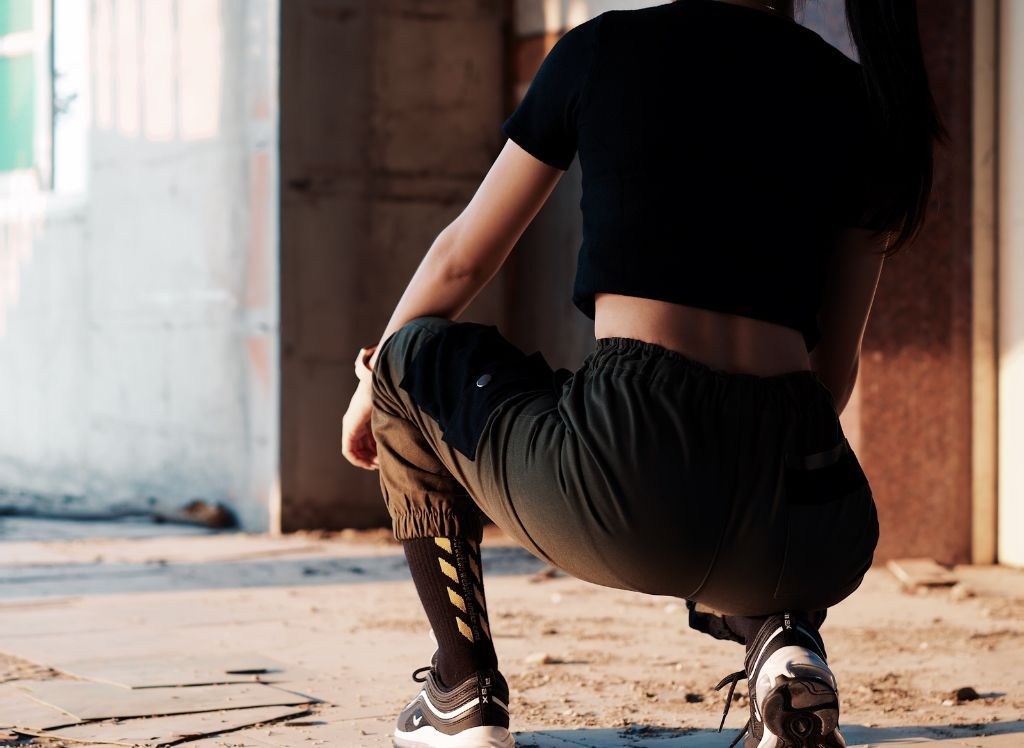

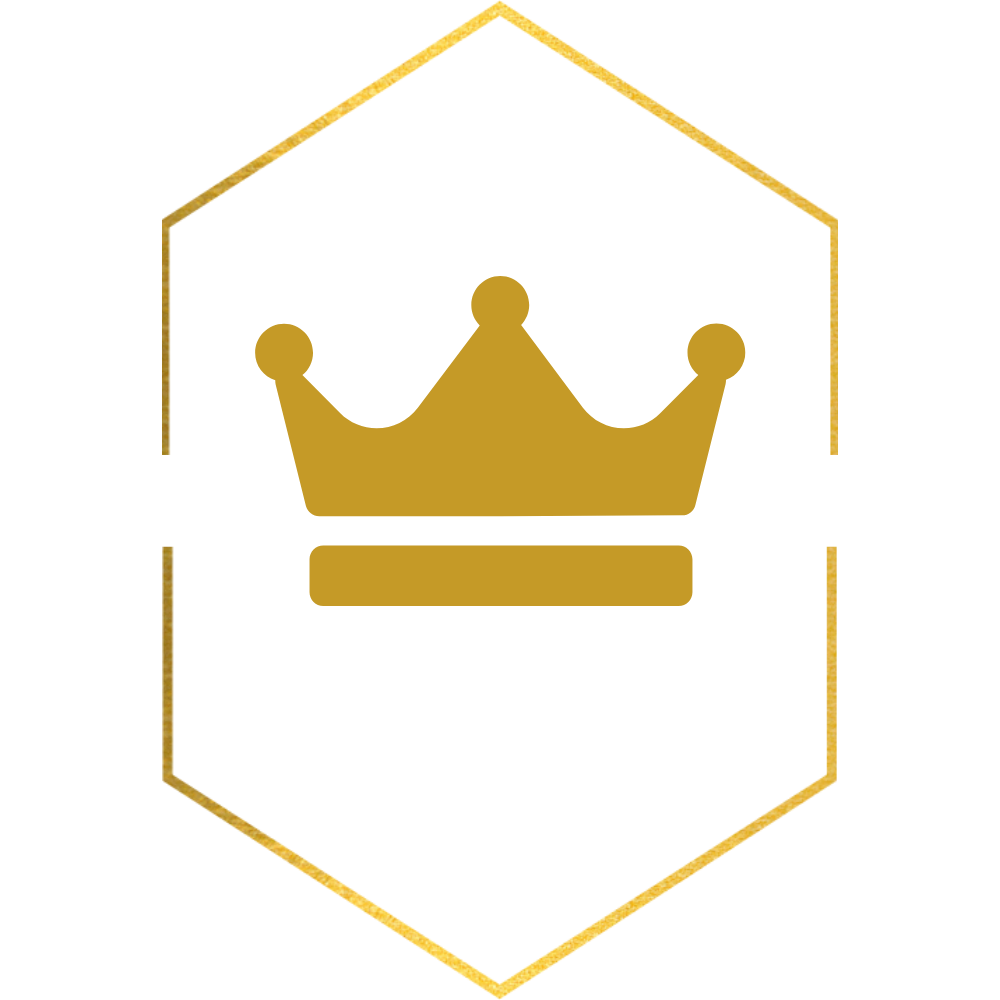







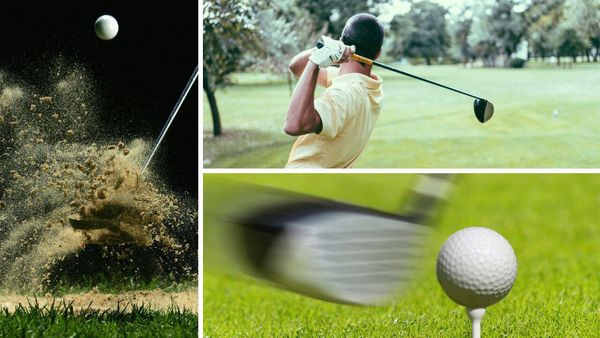


Member discussion